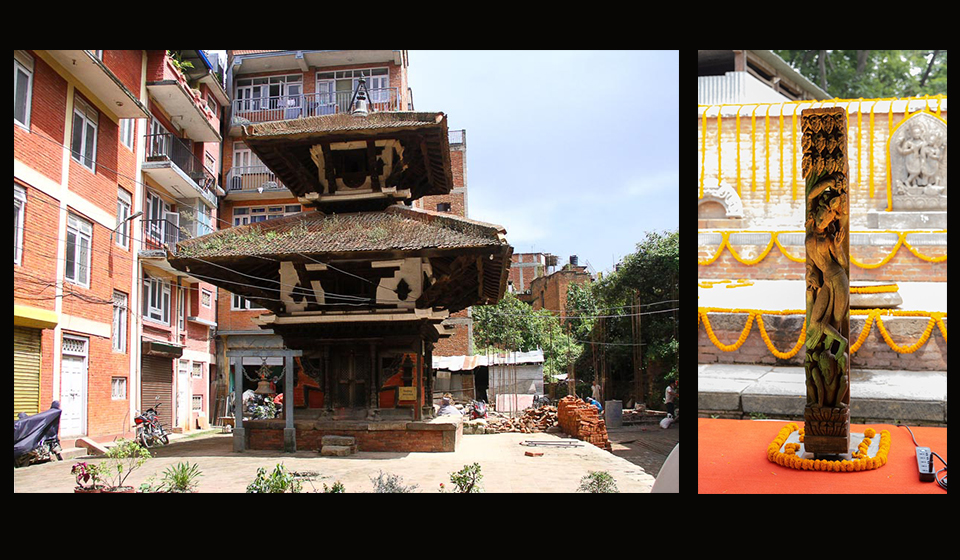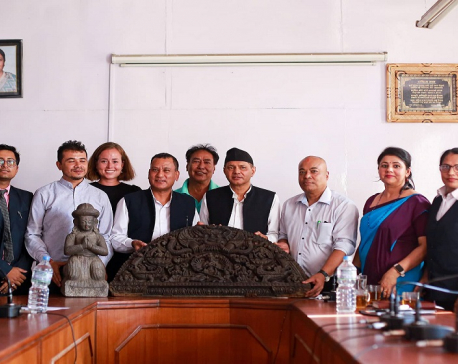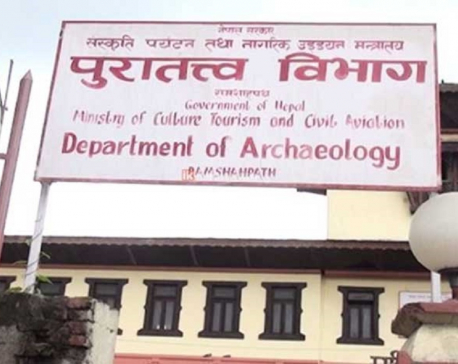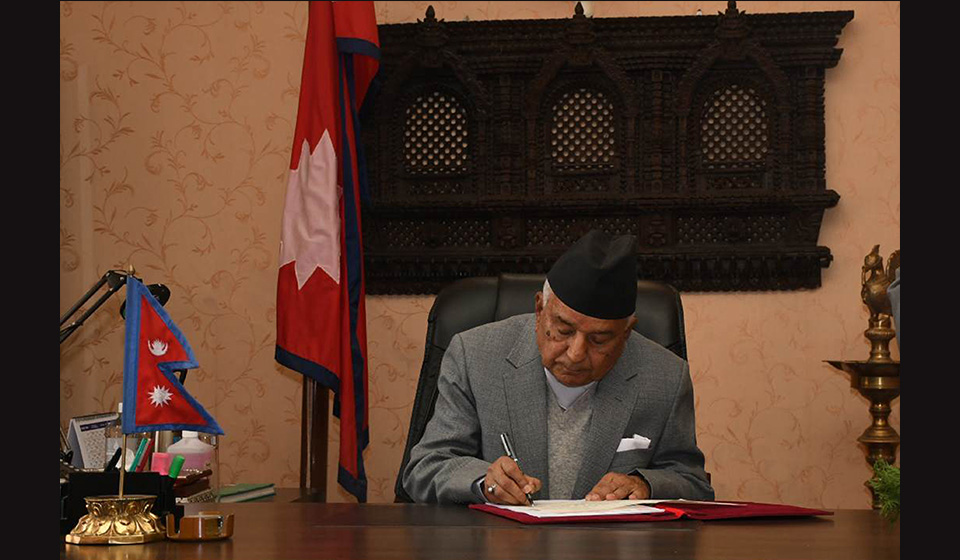
OR

Photo: Asian Historical Architecture and Tim Watts MP/Twitter
PATAN May 19: Fifty years after its theft, a tundal (temple strut) from one of the oldest temples left standing in Nepal has been returned by Australia’s Art Gallery of New South Wales (AGNSW).
The skillfully carved 1.3m portrayal of a Salabhanjika (tree deity) holding a tree branch, standing on the head of a Yaksha dates back to the 13th/14th century. The returned strut was a part of the original 16 that supported the roof of Ratneshwar Mahadev temple in Patan. All but two of those original struts were stolen between the 1970s and 1980s, a time that left Nepal’s historical sites nearly bare with the prevalence of looting. The plunder of the struts left the temple’s roof unsupported, making it collapse. The temple was rebuilt without a single one of the original struts.
It isn't clear how the strut exited the country in 1975. It ended up in the hands of art collector Alex Biancardi who bequeathed it to AGNSW. The gallery acquired it in 2000 and was notified of its stolen status within a year. The gallery and Nepali organizations had many discussions between then and now. The reason for the 20-year-long delay was stated to be political turmoil and the 2015 earthquake. As numerous museums continue to hoard scores of stolen relics, it’s not unwarranted to see this type of reasoning as flimsy.
Australia’s Assistant Foreign Minister, Tim Watts, attended the repatriation ceremony along with AGNSW Director Michael Brand. Brand handed the strut over to Heramba Raj Rajopadhyay, Ratneshwar Temple’s head priest on Tuesday, May 16. Minister Watts made a speech acknowledging the stolen status of the strut and Australia’s intentions to make reparations.
“In 1975, thieves took it. A collector acquired it, treasured it. When he died, he donated it. It sat in an Australian art gallery, which exhibited it, honoured it. People came to see it, were moved by its elegance and craft. But it didn’t belong there – that wasn’t its home”, he said.
A press release issued by Nepal’s Department of Archaeology states that 95 artifacts have been returned by countries like America, Britain, Tibet, India, Germany and Italy. The department shared that there is a possibility of more being returned by America, France, Britain and India.
It is encouraging to see museums and countries attempt to recompense for the damage done by looting, the black market, and illicit deals. The recent rise of artifacts being returned to countries like Cambodia, Bhutan, India, Nepal, etc. is hopefully going to open the floodgates, ensuring that every unlawfully acquired piece of history is back where it belongs.
According to Acting Executive Director Suresh Man Lakhe, the strut will be temporarily displayed at Patan Museum where its two counterparts live permanently. The long term placement of the artifact depends on the community and whether there is a general consensus that it should be returned to the temple. They will only allow the strut to leave the museum when proper security measures and plans are implemented.
With the deity back home, there remains the question of whether she should be displayed in Patan Museum, behind glass walls but safe from thieves, or returned to her place supporting the temple, as was her original purpose.
You May Like This

Archaeological items returned from Britain handed over to National Archives
KATHMANDU, August 26: The Department of Archaeology has handed over the archaeological items returned from Britain to the National Archives. Read More...

Department of Archaeology to study 'possible birthplace’ of Lord Ram in Thori
KATHMANDU, July 16: The Department of Archaeology (DoA) is preparing to excavate and begin archaeological studies in Thori, which the... Read More...

Ancient monastery renovated
MYAGDI, Oct 24: The Narsing Gumba, a 1,250 years old monastery at Muktinath, Baragung Muktikshetra rural municipality-1 in Mustang district,... Read More...

Just In
- President Paudel issues ordinance related to facilitation of investment
- Hearing on Cricketer Lamichhane’s appeal today
- Nepal Investment Summit (live)
- Clear Policies Set to Boost American Investment in Nepal: US Ambassador Thompson
- Second T-20 series: Nepal loses toss, set to go for fielding first
- Nepal Investment Summit 2024 and Victor Hugo Moments for Reforms
- Kathmandu continues to top the chart of world’s most polluted cities
- 3rd Investment Summit: Govt seeking letters of intent for 20 projects






-1200x560-wm_20240427144118.jpg)









Leave A Comment